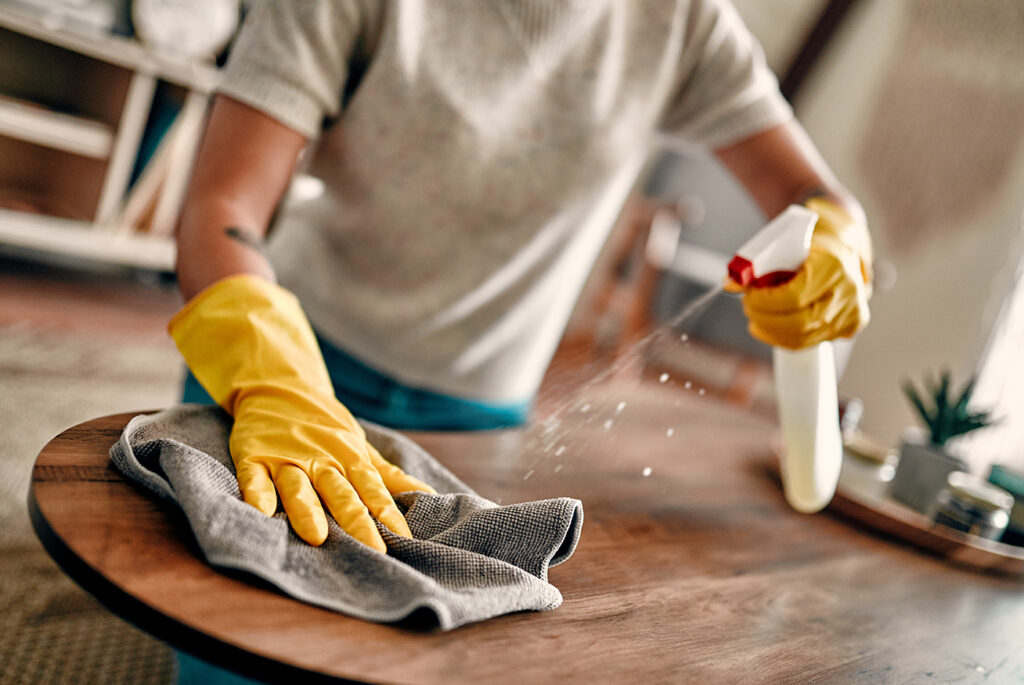How to Clean a Fridge and Leave It Spotless
It’s hard to imagine daily life without a refrigerator! Even though they’re essential for everyday life, it’s easy to overlook regular cleaning. A clean fridge not only promotes hygiene but also enhances the efficiency and lifespan of the appliance. In this comprehensive guide, you’ll learn all about fridge cleaning, including step-by-step cleaning tips for getting your fridge gleaming and spotless! Let’s roll up our sleeves and know how to clean a fridge to transform it from grimy to sparkling like new.
Difference Between Regular and Deep Fridge Cleaning
Regular fridge cleaning typically involves basic maintenance tasks that are performed on a routine basis to keep the appliance tidy and free of food residues and spills. This includes wiping down shelves and drawers with room-temperature water, disposing of expired items, and checking for any visible signs of spoilage. It’s a quick and straightforward process aimed at preventing dirt and bacteria buildup and making sure that the fridge remains hygienic for everyday use.
On the other hand, deep fridge cleaning is a more thorough and intensive process that goes beyond surface-level cleaning. It involves emptying the inside of a fridge, removing all shelves and drawers, and meticulously cleaning the nooks and crevices of the appliance. Deep cleaning targets hidden dirt, stains, and odors, requiring more time and effort to achieve a comprehensive level of cleanliness. You’ll do this type of cleaning less frequently—every three to four months, to maintain the optimal performance and freshness of the fridge. You’ll want to make sure cleaning the fridge is part of your regular kitchen maintenance routine.
How Often To Clean a Refrigerator
The frequency of refrigerator cleaning depends on several factors, including usage patterns, household size, and individual preferences. As a general rule of thumb, you’ll want to thoroughly clean the refrigerator at least once every three to four months to prevent the accumulation of dirt, spills, and food residues. However, more frequent cleaning may be necessary for households with higher usage or larger families, perhaps every two months or even monthly. Of course, you’ll also want to conduct a deep clean before moving out or selling your appliance.
Regular clean up such as wiping down spills and throwing away perishables past their prime should be performed weekly to ensure optimal cleanliness and hygiene. Adhering to a consistent cleaning schedule not only promotes food safety but also helps maintain the appliance’s efficiency and longevity. Adjusting the cleaning frequency based on individual needs and usage habits can help keep the refrigerator in top condition for years.
What to Use to Clean Fridge
Having the right materials at your disposal is critical to efficiently tackling grime and ensuring a fresh, hygienic environment for your food storage needs.
Materials
- Hot water or warm water
- Mild dish soap or detergent
- White vinegar
- Baking soda
- Microfiber cloths or soft sponges
- Paper towels
- All-purpose cleaner or disinfectant spray (optional)
- Rubber gloves (optional)
Tools
- Empty spray bottle (for mixing cleaning solutions)
- Bucket or basin
- Soft-bristled brush or toothbrush (for scrubbing hard-to-reach areas)
- Vacuum cleaner with brush attachment (for cleaning condenser coils)
- Small step stool or ladder (for reaching high shelves)
- Plastic scraper or spatula (for removing stubborn stains)
How to Clean Out a Fridge
Once your tools are ready, here’s how to clean a refrigerator to have it sparkling like new.
1. Empty the Fridge
Begin by removing all items from the refrigerator, including food, shelves, condiments, and drawers, which allows for easier access to all surfaces and ensures a thorough cleaning.
2. Clean Shelf by Shelf
Wipe down each shelf and drawer inside the fridge using warm, soapy water and a microfiber cloth or sponge. Pay special attention to spills and stains, ensuring you remove them completely.
3. Remove Odors
To eliminate any lingering odors, create a solution of equal parts hot water and white vinegar. Wipe down the interior surfaces of the fridge with this solution, focusing on areas where odors are most potent.
4. Clean Refrigerator Gasket
Using a soft-bristled brush or toothbrush dipped in warm, soapy water, gently scrub the refrigerator gasket (the rubber door seal). This helps to remove dirt and grime that can accumulate over time.
5. Clean Water Dispenser
If your fridge has a water dispenser, clean it thoroughly according to the manufacturer’s instructions. This may involve flushing the dispenser with water and vinegar solution to remove any buildup or impurities.
6. Remove Mold
Inspect the fridge for any signs of mold growth, especially in hard-to-reach areas like the back corners. Use a mixture of water and bleach (1:1 ratio) or a commercial mold remover with a clean cloth to eliminate mold and prevent regrowth.
7. Clean the Outside of the Fridge
Once you’ve fully cleaned from the back of the fridge to the front, it’s time to make the outside sparkle as well! Stainless steel refrigerators will most likely need extra TLC because they can get streaks. Use a combination of vinegar and olive oil, or try stainless steel cleaning products to get your fridge shining again.
Fridge Cleaning FAQs
How do I clean my fridge with baking soda?
First, empty the fridge of all food items. Mix one tablespoon of baking soda per quart of warm water. Use a sponge or cloth dipped in the solution to wipe down all interior surfaces of the fridge, including shelves, drawers, walls, and door seals. Rinse with clean water and dry thoroughly with a towel.
How do you deep clean a refrigerator?
Deep cleaning a refrigerator involves emptying it and removing all shelves and drawers. Wash the shelves and drawers with warm soapy water, rinse, and dry thoroughly. Clean the interior surfaces of the fridge with a mixture of warm water and mild detergent or a solution of vinegar and water to remove stubborn stains and odors. Pay attention to areas like the door seals and the back corners where dirt and grime may accumulate. Allow the fridge to air dry before replacing shelves and restocking with food items.
What is the best thing to clean the inside of a refrigerator?
The best thing to clean the inside of a refrigerator is a mixture of warm water and mild detergent or white vinegar. Both options effectively cut through grease, grime, and food residues while disinfecting surfaces. Baking soda can also be used as a natural deodorizer to eliminate odors.
How do you clean a fridge without food going bad?
To clean a fridge without food going bad, work quickly and efficiently to minimize how long the fridge door is open. Remove perishable items and store them in a cooler with ice packs while you clean. Alternatively, place perishable items in a colder part of the fridge, such as the crisper drawer, to keep them chilled. After cleaning, promptly return the food items to the refrigerator and ensure they are stored at the appropriate temperature to maintain their freshness.
Don’t Clean It by Yourself
While cleaning your fridge can be rewarding, it can also be time-consuming and physically demanding. If you find yourself short on time or energy, consider hiring a Tasker to handle the job for you. Taskers can efficiently clean your fridge from top to bottom, leaving it sparkling clean and odor-free. With Taskrabbit, you can conveniently book a cleaning service or other kitchen tasks so they fit your schedule and budget, allowing you to enjoy a pristine fridge without the hassle of doing it yourself. Say goodbye to the stress of fridge cleaning and let a Tasker take care of the dirty work for you!














